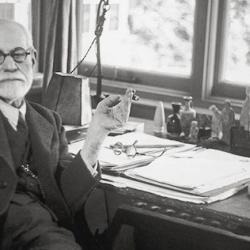David Wootton’s TLS review of Quentin Skinner’s Forensic Shakespeare is a primer on Elizabethan law and legal rhetoric.
Wootton tells us, “We tend to think rhetoric is about using figures of speech, but that was only a small part of the orator’s training, which relied both on textbooks inherited from classical Rome and on contemporary summaries of traditional teaching. The orator’s core training was quite specific: it was focused on courtroom argument.”
And we learn some of “the basic principles of the English law in Shakespeare’s day. There were as yet no rules of evidence: hearsay evidence, for example, was admissible in court. There was no ‘beyond reasonable doubt’ test, and indeed no legal presumption of innocent until proven guilty. The prosecution was under no obligation to produce witnesses for cross-examination. . . . Prisoners had no right to know the evidence against them before trial (the key piece of evidence against Ralegh was sprung on him during the trial), no right to representation, and no right to speak last in their own defence. Trials lasted at most a few hours, often only a few minutes. No wonder Ralegh referred to what he called ‘the cruelty of the laws of England.’” So, a cheer or two for Enlightenment legal reform!
Most intriguingly, we learn that for Elizabethans, assembling a case was not a matter of patching together facts as a matter of interpreting ambiguous signs and tokens: “English is unique in having the word ‘evidence’ to refer to all the varied information – both documents and testimonies – brought before a court. In modern English evidence underpins a proof; in Continental law, courts consider ‘proofs’ in the plural, for the word ‘proof’ functions rather like the word ‘evidence’ in England. The rhetoric handbooks with which Skinner is concerned don’t refer to ‘evidence,’ for they are either written in Latin or derive closely from Latin sources. Instead they speak of ‘tokens’ and ‘signs.’ A token is something left behind, a footprint, for example: Desdemona’s handkerchief is a token. A sign is something open to interpretation: Claudius’s reaction to the play put on by Hamlet, his rushing from the room, may be interpreted as a sign of guilt.”
Skinner’s main argument is that “over and over again Shakespeare’s characters follow to the letter the instructions of the rhetorical handbooks.” The speeches are rarely given by a single character in one scene, and so they are not easy to recognize as the forensic rhetoric that they are. But Wootton finds Skinner’s main argument exhaustive, systematic, and finally definitive on its main argument.
What Skinner does not do, Wootton argues, is tell us why Shakespeare would have written his plays this way. Part of the reason lies no doubt in the inherent drama of the court: “To enter this world is to enter a place in which the outcome is in doubt until the very end of the trial, a world in which the audience listen attentively, but withhold judgment while they listen, a world in which the judgment of the court is not necessarily true (as the Judgment of the English jury was always held to be – there was no appeal against a jury’s finding on a matter of fact), but simply reflects the clash between two opposing arguments at a particular moment in time. It is to enter a world that is inherently dramatic, and one in which justice is never manifest, but is always a rhetorical construction.”
Because he doesn’t address why Shakespeare used forensic rhetoric so much, Skinner doesn’t help as much as he could to make sense of what Wootton thinks is a critical problem in Shakespearean drama: the absence of justice. “It is hard to think of a moment in a Shakespeare play,” Wootton writes, “when justice – whether human or divine – is done. . . . What we mainly find in Shakespeare are stories of injustice.” Guilt and innocence are before the audience constantly, but the issues never sorted out neatly.
Why one is condemned and another acquitted is, Wootton argues, often a matter of plot: “Shylock loses for the same reason Desdemona dies or Don Quixote tilts at windmills or Elizabeth Bennet gets married: because that is what the plot demands. Why he loses is a problem of reverse engineering. Shylock does not lose because Portia is a better lawyer, or has the law on her side, or follows the rules of rhetoric; he loses because the plot requires him to, and so Portia must be given all that she needs to ensure his defeat.”
But Wootton isn’t satisfied with that internal explanation., He thinks Shakespeare has a point to make: “Shakespeare never seems satisfied by commonplaces, and when they are invoked in his plays they never carry the expected ring of authenticity. Shakespeare’s drama is thus, unlike the courtrooms of the England of his day, an education in systematic scepticism.” The lack of justice isn’t the fault of bad rulers, but inherent in the situation of Elizabethan justice. It is the “fault of the signs and tokens on which he and his contemporaries were obliged to rely. Signs and tokens were not yet, as they became for Conan Doyle’s Sherlock Holmes, ‘clues’ from which scientific deductions could be made. Shakespeare, I would argue, follows the rules of rhetoric precisely because he was aware that that art could not deliver the proof that decisions of life and death required. There is something wrong with the rules themselves.”
Wootton leaves me unconvinced at a couple of points. I do not think justice is quite so lacking as Wootton argues. He sees, for instance, Shylock’s forced conversion as an injustice, but would Elizabethans have done so? I also wonder what sort of tidy justice Shakespeare could have dramatized that could have both satisfied Wootton and yet avoided the patness of poetic justice. Perhaps on this issue, we need to take a cue from the recent work on Shakespeare as theologian: Perhaps it is not justice, but human justice of which he is (justly) skeptical. Perhaps the gleams of justice that do appear are “signs” of a divine justice in which we can ultimately trust.
Wootton is certainly correct that Shakespeare is skeptical, not least about the reliability of signs. Misinterpretations abound, in all genres of Shakespearean drama. We would be exaggerating only slightly (and risking pomposity) by saying that for Shakespeare comedy is semiotic misconstrual. Perhaps again this requires a theological gloss: Perhaps the skepticism about forensic signs reflects a wider post-Reformation skepticism about the truth of symbols.
(David Wootton in TLS [December 12, 2014], 3f).















